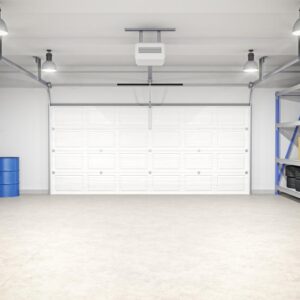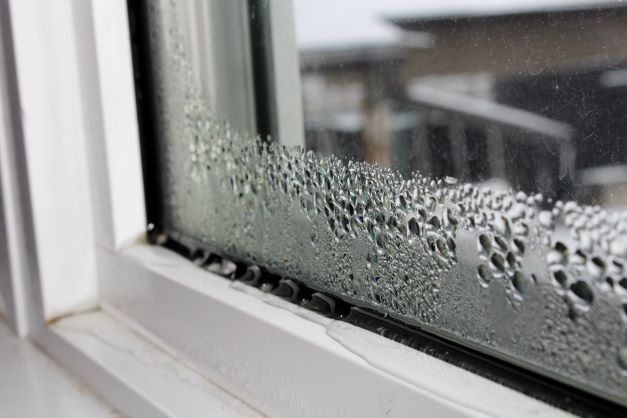Should I be worried about window condensation? How do I stop getting condensation on my windows? Many people ask these questions when they notice condensation inside windows and wonder what causes it. This guide explains what window condensation is, what causes it, and how to remedy the pesky problem.
What Is Window Condensation?
Condensation on windows is moisture buildup on the surface of the window. It can appear on any window, including those that are sealed well. Although it’s mostly a nuisance, it can also cause problems in your home.
What Causes Condensation in Windows?
Window condensation can come from several possible sources in your home. Showers, cooking, laundry, and even human mouths are common sources. For every person inside the home, daily breathing adds a few pints of water vapor to the air.
So, why does condensation occur? It happens when warm and cold air come into contact. Air can hold varying amounts of water vapor, and its ability to do this depends on its temperature. Colder air holds fewer water molecules than warmer air. When the warm air inside your house meets the colder air on your windows, condensation forms.
Is It Normal to Have Condensation on the Inside of Windows?
During the winter, it’s common to have condensation in windows. You may notice it during other times of the year as well. It’s also common in well-sealed homes since they trap more humidity indoors.
Is Window Condensation Harmful?
If you don’t address a continual condensation problem, it can become harmful to your home and everyone who lives there. For example, it can cause mold or mildew. People who have allergies or respiratory problems are especially susceptible to mold and mildew. Additionally, condensation can turn to ice on windows and walls, and that ice can damage them. If you have wooden window frames, frequent moisture can cause them to rot.
How to Fix Window Condensation: 8 Methods
There are several solutions to window condensation problems. Fortunately, most of them are inexpensive and easy to do.
1. Install Weather Stripping
Does weather stripping really work? Although it may not always be a solution by itself, it’s a helpful part of reducing condensation. If you have older windows, weather stripping can be especially valuable. In some cases, it can accomplish as much as newer, high-priced windows can in terms of reducing condensation. The package may show you how to replace weather stripping on a door. You can also find online guides showing how to weather-strip a door or window.
2. Use Fans
Fans go a long way in helping to circulate the air inside your home. Also, if you have heavy curtains that stay closed, open them for a while. This helps remove trapped heat near windows. As you run fans to circulate interior air, be sure to maximize the benefits by opening interior doors.
3. Add Storm Windows
For those wondering how to prevent condensation on windows, this is a helpful step in older homes. Using storm windows during the winter can help reduce condensation. Also, they can help reduce energy consumption. To maximize their effectiveness, install good weather stripping as well.
4. Use a Dehumidifier
When you notice window condensation often, it’s a good sign your home is too humid. Relative humidity should be around 50% during the summer and 30% during the winter. It shouldn’t be above 60% at any time.
How does a dehumidifier work? What exactly does a dehumidifier do? It’s a great solution for reducing condensation. A dehumidifier works by taking in warm air using a suction fan. It has refrigerated coils and the warm air contracts as it passes over them. This causes condensation to collect inside the device, and it puts out dry air. You can use portable dehumidifiers in problematic rooms or install a whole-home dehumidifier.
5. Use a Moisture Remover
In addition to portable dehumidifying machines, there are other ways to reduce moisture in a specific area. Today, you can find moisture eliminators in hardware stores. They usually consist of crystals that draw in moisture and absorb it. An example is DampRid moisture absorber.
6. Keep Plants and Firewood Away From Windows
Both plants and firewood release moisture into the air. For this reason, it’s better to move them if possible. For example, a plant on a kitchen windowsill may only add to the moisture in the air from cooking.
7. Use Exhaust Fans and Open Windows
Exhaust fans are helpful for removing humid air. They’re especially important to use in bathrooms or kitchens. Whenever you cook or take a shower, be sure to run the fans. You can also turn them on for a while if your windows have condensation without the shower or stove running.
When possible, open the windows for a short time on days when the temperature isn’t as low. This is especially important in newer homes that are sealed tighter. Without some fresh air, you’re more prone to mold and water damage risks.
If you’re wondering how to stop condensation on windows overnight, opening windows helps. However, don’t open them completely. They should only be slightly ajar to help remove moisture by allowing cooler air to enter. While this isn’t advisable when it’s frigid outside at night, it can help on milder nights.
8. Replace a Window if Necessary
Fortunately, this isn’t usually the solution for how to stop condensation on windows indoors. It may be the solution if you have condensation between window panes. When that happens, it may be a faulty seal. You may be able to fix the issue for a reasonable cost by replacing the insulated glass panel. However, it may be time for new windows in some cases. A professional can assess the issue to determine the right solution.
How to Fix Outdoor Window Condensation
Typically, outdoor window condensation isn’t a cause for concern. It’s more common during the summer in many places. If it annoys you, trim shrubbery near the windows and raise your AC temperature to reduce it. During the summer, the heat from the sun will usually remove condensation as the day progresses.
If you want to enjoy the light in the morning, you can also apply a special window coating. A windshield water repellent will help condensation turn into droplets that quickly move off the window.
How to Fix Car Window Condensation
Many people wonder how to get rid of condensation inside car windows. In some instances, car window condensation can reduce visibility. Remember that warm air can hold more moisture. Because of this, it helps to turn on the heat in your car. Turn it to the maximum setting. Next, turn on the AC to help draw out moisture from the air as it reaches the coils. Turn off the button that recirculates air to help bring in dry air.
It may also help to open the windows slightly for a few minutes to remove interior humidity. Keep in mind that car windows are more likely to collect moisture with more passengers. You can also improve forward visibility with the defroster on to keep warm air blowing on the windshield.
Find Your Window Condensation Solutions
You’re now ready to start finding the supplies you need to fix your window condensation issues. Find everything you need to get rid of window condensation at your nearest True Value store.












